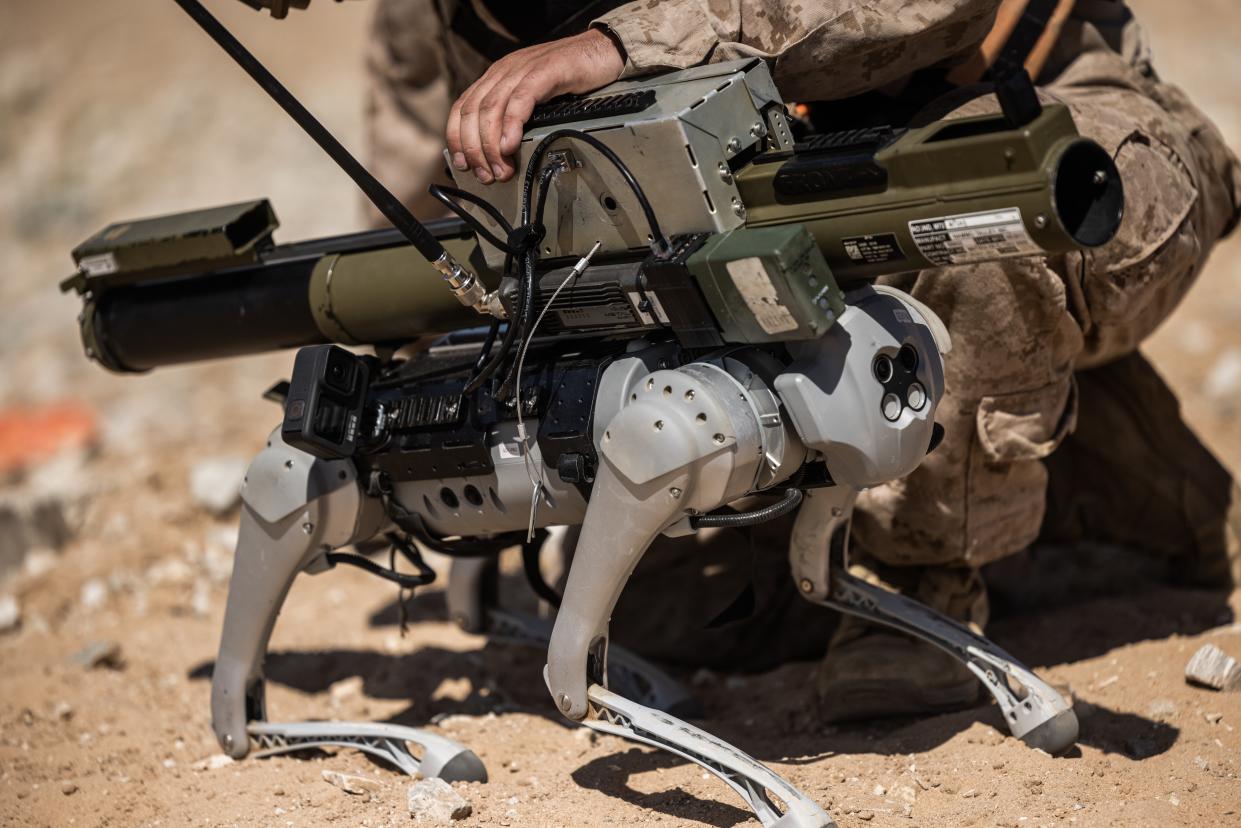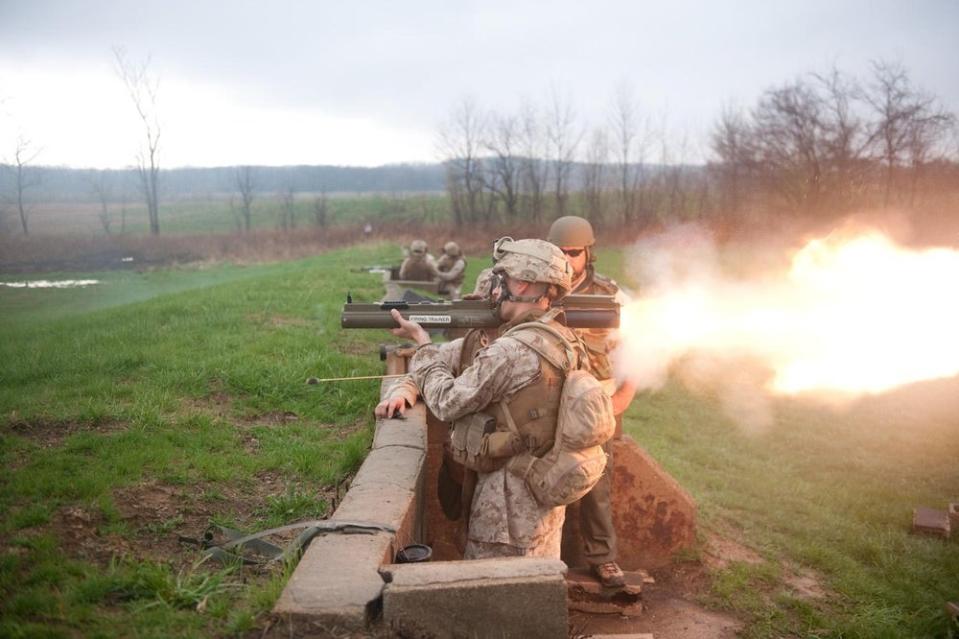The Marines put an anti-tank rocket on a 'robotic goat'

The Marine Corps emphasizes the concepts of improvise, adapt and overcome. With a smaller size and budget than the Army, the USMC has to be clever when it comes to arming the Corps. For example, the Marines replaced their M4 carbines with the M27 IAR; this started as a replacement for just the M249 SAW. Pushing the envelope of technology, the Marines test-fired an anti-tank rocket from a robotic goat.

Working with the Office of Naval Research, the Marine Corps Air Ground Combat Center's Tactical Training and Exercise Control Group fired an M72 Light Anti-tank Weapon from a quadruped robotic platform. Also known as 29 Palms, MCAGCC is the largest base in the Marine Corps and allows for extensive testing of new and experimental technologies. Referred to as the robotic goat, the robot successfully fired the rocket on September 9, 2023. Designed to support Marine ground forces, the robotic goat can carry both weapons or sensors to reduce the load of individual Marines.
"Instead of having a Marine handle the weapon system, manipulate the safeties, we could put a remote trigger mechanism on it that allowed it to all be done remotely," 1st Lt. Aaron Safadi, officer in charge of the emerging technology integration section at TTECG, said in a USMC press release. "The Marine could be behind cover and concealment, the weapon system could go forward, and the Marine could manipulate the safeties from a safe place while allowing that weapon system to get closer to its target."

Previously, the Marine Corps tested the Gladiator Tactical Unmanned Ground Vehicle. Designed by Emil Lien Akre in 2005, the Gladiator was a medium-sized TUGV designed to support Marines and minimize risk to troops in ground combat. It could be armed to serve in an assault role, but could also perform surveillance, reconnaissance, and even breaching missions. The final Gladiator concept vehicle could fit into the back of a HMMWV for transport by ground units; the tracked TUGV could maneuver over rough terrain but lacked the speed to keep up with mechanized units. In the end, the Marine Corps elected not to put the Gladiator into production. Still, it served as the world's first safe and successful armed TUGV.

